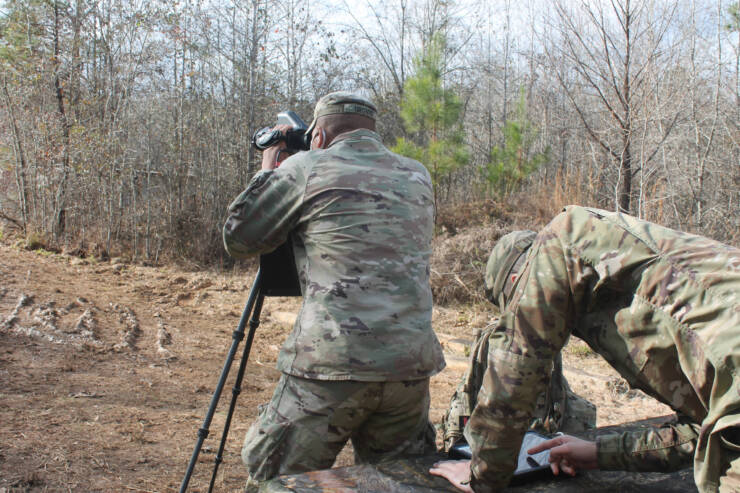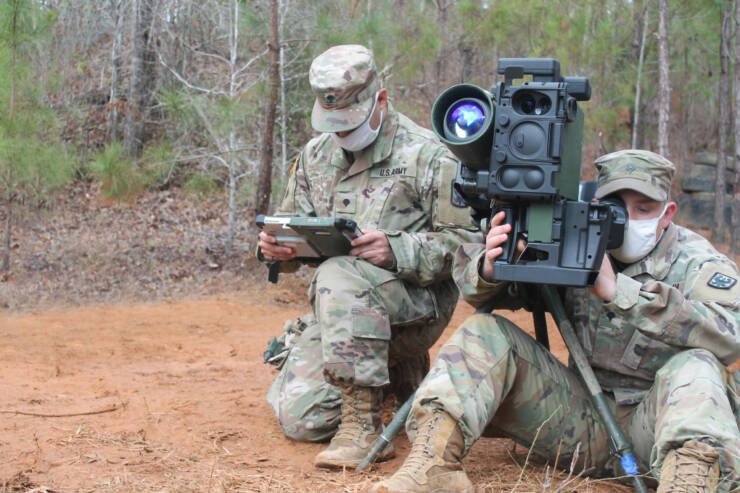
Tel Aviv. Reducing the sensor to shooter time is the main target of many armies in the world. Now the US army is evaluating the Israeli solution.
Rafael Advanced Defense Systems Ltd. and Rafael Systems Global Sustainment (RSGS), its new US subsidiary, jointly demonstrated Fire Weaver, an advanced sensor-to-shooter system leveraging AI decision-aid software and 3D terrain data for the US Army, as part of the Army Expeditionary Warrior Experiment 21 (AEWE) in Fort Benning, GA.
Fire Weaver integrates as an open and modular software application with existing battle management systems and other tactical computing devices.
Fire Weaver enhances ground combat capability with enhanced situational awareness and ability to maximize available combat power in GPS-denied environments. It networks sensors and formations together, providing a shared understanding on a fully digital common operational picture (COP) enhanced with augmented reality of battlefield intelligence. The result is intuitive situational awareness and common visual language “on the sights” of the battlefield for commanders and soldiers and enabling them to close sensor-to-shooter loops in seconds.
AEWE 2021 is assessing advanced technologies in support of US Army modernization, including enhancing lethality. Fire Weaver is a key enabler for increased lethality needed by US Army Infantry formations conducting multi-domain operations. This demonstration was a joint effort between the US Army and Rafael with the Army providing an operational assessment team and a platoon of soldiers, including combat veterans and junior soldiers from the Army’s EXFOR unit.
At AEWE, soldiers operated the sensors and shooters to acquire and engage multiple targets, achieving effects in seconds where traditionally it would take minutes or longer. The artificial intelligence decision-aid algorithms provide target and weapon pairings based off a predetermined set of rules controlled by the Commander at echelon, with constant human on the loop presence for lethal tactical decisions.
The soldiers received half a day’s training and operated the systems by themselves, commenting on its intuitiveness the difference it would make in combat. The soldiers also explained and demonstrated the system to senior leaders that were in attendance from across the force, Army Futures Command, DEVCOM, TRADOC, HQDA, and FORSCOM.
Leading the team at RSGS is LTG (Ret.) Joe Anderson who stated at AEWE: “Fire Weaver provides the US Army infantry a marked advantage in overmatch. This proven and capable technology is available today for high maneuverability, survivability and lethality. We appreciated the opportunity to demonstrate Fire Weaver at AEWE 21 and look ahead to work with the Army on modernization challenges against our future and peer threat adversaries.” The demonstration was part of a larger demonstration of Rafael technologies, including BNET cognitive broadband IP Software Defined Radio and SPIKE SR Precision Strike Shoulder-fired missile.
Following AEWE 21 demonstration and assessment, Army senior leaders discussed Fire Weaver and other Rafael enabling technologies for inclusion in future Army Live Prototype Assessments under the Joint Modernization Command such as AEWE 22 next January, the Maneuver Fires Integration Experiment and Project Convergence 22. In early 2020, Rafael received a contract from the Israeli Ministry of Defense to supply Fire Weaver to Israeli Defense Force (IDF) ground divisions.

The Israeli defence forces (IDF) are enhancing their network centric capabilities to cut dramatically the sensor to shooter time.
Rafael was selected to supply its Fire Weaver – a networked sensor-to-shooter system to the IDF ground forces divisions.
The system connects all battle participants to enable closing rapid, precise, effective and secure sensor-to-shooter loops. As a result, Fire Weaver considerably maximizes the operational performance and decreases the battle duration.
According to Rafael Fire Weaver provides the tactical forces with a GPS independent geo- pixel based tactical common language among all the sensors and shooters which grants optimal situational awareness and improved understanding of the battlefield. Targets, blue forces, sensitive locations and other points of interest, are shared immediately and accurately and are augmented on the system sights, based on 3D models using RAFAEL’s advanced computer vision technology. This enables fighters to perceive the precise location of the enemy from any vantage point and any distance regardless of their own position.
According to the Israeli company, Fire Weaver generates live, high-precision, three-dimensional, GPS-independent common visual language (targets, critical information, blue forces, and other points of interest), shared among all sensors and shooters in the battlefield on their own weapon sights. The system instantly selects the most relevant shooter for every target acquired, enabling multiple, simultaneous, and precision engagement.
Rafael explained that by using artificial intelligence and cognitive information dissemination, Fire Weaver enables better usage of munition and more efficient battle management, as well as a high level of safety. It minimizes collateral damage and avoids incidents of friendly fire says the company.
Brig. Gen. (ret.) Shmulik Olanski, Head of Rafael’s Land Innovation Center, said that the Network Centric Warfare (NCW) infrastructure is a power multiplier. “It allows different forces to talk the same language and allows all these forces, to see a target clearly no matter where the force is. It gives a fused optic data to all forces involved in combat,” he added that “the degree of autonomy given to any weapon system is still in the hand of the field commander.”
Maj. Gen. (res.) Uzi Moskowitz, is a former head of the IDF’s Cyber Communications and Defence Division. He was responsible for the following fields: ICT architecture, communications, software, computer centers, cipher, spectrum and cyber protection. In a special interview with Shepard Media he explained the basic idea behind the NCW “The times of big formations of tanks and infantry colliding face to face in the battle field are over. Today, wars are mainly between armies and armed groups using their cities and villages to hide and attack. The enemy now is moving in small groups from one hiding place to the other in an area he knows in every small detail.”
The senior “digital officer” added that in order to hit the new kind of enemy, targets should be generated in almost real time, and distributed to all participating forces – on the ground, in the air and at sea “And with so many sensors operating simultaneously, the data fusion is essential to produce time critical targets” Moskowitz said that this fused data must then be distributed to all the fighting forces and all formations. “We in the IDF have in place such a system that allows the different units to hit the enemy , whether it’s a small squad launching missiles or a larger formation.”
The Fire Weaver is another layer in the NCW infrastructure the IDF is building to address future combat operational needs.
-The writer is an Israel-based freelance journalist








